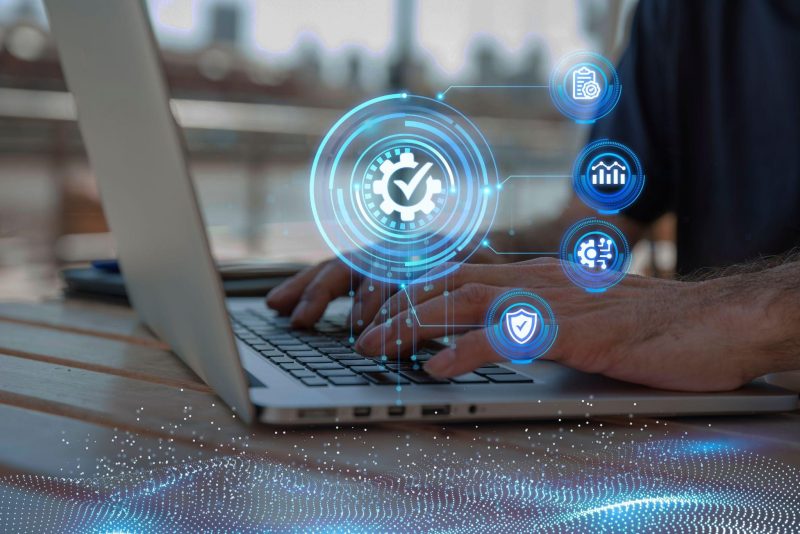In a world where digital transformation is reshaping how businesses operate, managing technology assets effectively is more important than ever. IT Asset Management (ITAM) provides the structure and visibility organizations need to track, optimize, and protect their technology investments. From laptops and servers to software licenses, cloud subscriptions, and even managed IT services, ITAM ensures that every asset is accounted for, used efficiently, and aligned with business goals.In this article, we explore the following:
· The fundamentals of IT Asset Management
· Types of IT assets
· The IT Asset Management lifecycle
· The benefits IT Asset Management can provide
· Common challenges of ITAM
· Best practices for implementation
What is IT Asset Management?
IT Asset Management (ITAM) is the strategic practice of tracking and managing an organization’s IT assets throughout their lifecycle—from planning and acquisition to deployment, maintenance and eventual disposal. These assets include:
· Hardware: desktops, laptops, mobile devices, servers, printers
· Software: licenses, subscriptions, applications
· Digital resources: cloud services, virtual machines, storage
Unlike basic inventory tracking, ITAM provides a strategic view of how assets are used, who owns them, their compliance status, and their financial impact. This visibility helps organizations make informed decisions, reduce costs, and stay compliant with licensing and regulatory requirements.
Understanding IT Asset Management
IT Asset Management (ITAM) is a structured approach to overseeing an organization’s technology assets, from acquisition through disposal. It enables greater visibility into asset performance and usage, streamlines processes, and supports informed decision-making around resource allocation. When done well, ITAM can maximize asset value, reduce costs, ensure compliance with licensing and regulatory requirements, and mitigate risks related to security and data breaches.
As IT environments grow more complex, a comprehensive ITAM strategy becomes essential for maintaining productivity, ensuring timely access to tools, and eliminating redundancies. By aligning technology investments with business objectives, ITAM drives operational efficiency and contributes to stronger business outcomes.
Types of IT Assets
Effective IT asset management requires understanding the various assets organizations rely on. These assets fall into tangible or intangible assets.
Tangible assets include the physical components, or hardware, of IT infrastructure, such as computers, servers, printers, and networking devices. Managing these assets involves tracking their lifecycle from procurement to disposal, ensuring maintenance and updates align with operational needs.
Intangible assets encompass software applications, licenses, patches and security updates, cloud services, and systems that facilitate business functions. Proper management of these assets is essential not only to ensure the resources are running properly for all of your devices, but also for compliance and cost efficiency.
The IT Asset Management lifecycle
Just about every IT asset—from servers and printers to software applications—has a finite lifespan. As technology evolves, organizations continuously upgrade hardware, renew software licenses, and retire outdated systems. To manage this ongoing evolution effectively, businesses need a structured asset lifecycle management plan that guides each phase of their IT journey.
This lifecycle typically includes:
Planning: Identifying which IT assets are needed—justifying costs and aligning purchases with budget and strategic goals.
Acquisition: Establishing procurement processes, determining whether to buy, lease, or license assets, and empowering decision-makers.
Deployment: Installing and integrating assets into existing systems, assessing process changes, and providing necessary employee training.
Maintenance: Scheduling updates, repairs, and upgrades, and assigning responsibility for ongoing support.
Retirement: Managing lease expirations and license terminations, replacing outdated assets, and initiating new support agreements.
By addressing these phases proactively, organizations can ensure their IT infrastructure remains secure, efficient, and aligned with business needs.
Benefits of ITAM
As technology evolves, the complexity of IT environments necessitates a comprehensive IT asset management strategy. Proper management boosts productivity by ensuring timely access to necessary tools and maintaining regulatory compliance. IT asset management also results in significant cost savings by eliminating redundancies and optimizing technology investments, leading to enhanced business outcomes.
Implementing an effective asset management solution offers tangible operational and strategic benefits across an organization such as:
· Cost Optimization: By identifying unused or underutilized assets, ITAM helps eliminate waste and avoid unnecessary purchases. It also supports budgeting and forecasting by providing accurate data on asset costs and usage.
· Improved Efficiency: With a centralized asset inventory, IT teams can respond to service requests faster, reduce downtime, and streamline onboarding and offboarding processes.
· Enhanced Security: ITAM helps identify outdated or unsupported devices that may pose security risks. It also supports patch management and ensures that only authorized devices and software are used within the organization.
· Informed decision making: Real-time insights into asset performance and utilization enable IT leaders to make data-driven decisions about technology investments, upgrades, and vendor contracts.
· Regulatory Compliance: ITAM simplifies compliance with industry regulations such as HIPAA, GDPR, and SOX by maintaining accurate records and audit trails.
Common Challenges in ITAM
There are a number of challenges organizations can face when it comes to IT asset management. A lack of visibility into the asset lifecycle can complicate asset tracking from acquisition to disposal. Poor data management can lead to inaccurate inventories, making it difficult to understand available resources and their locations. Evolving technology and compliance requirements can overwhelm already stretched teams, further complicating management.
Poor asset management can increase costs, underutilize resources, and lead to costly compliance violations, affecting operational efficiency and damaging reputation. Without proper management, cybersecurity threats increase as unmonitored devices become vulnerable to attacks.
To overcome these challenges, organizations can invest in robust IT asset management solutions for enhanced visibility and streamlined asset tracking. Regular audits and inventory updates ensure data accuracy and compliance. Cultivating a culture of accountability and training staff in IT asset management best practices empowers teams to manage assets effectively. Prioritizing these strategies helps mitigate IT asset management challenges and optimize IT investments for better performance and security.
Getting started with IT Asset Management
Implementing IT asset management begins with assessing current practices. Evaluate how you track, manage, and optimize IT assets—identifying process gaps and understanding asset lifecycles from acquisition to disposal. This assessment provides insights for improving and establishing a solid IT asset management strategy foundation.
Selecting the right IT asset management tools and software is crucial for streamlining asset management. Some best practices to ensure your IT asset management efforts provide longevity and efficiency include:
Automate Asset Discovery: Use automated tools to detect and track assets in real time. This reduces manual errors and ensures up-to-date inventory data.
Define Clear Policies: Establish governance policies that define roles, responsibilities, and procedures for asset management. Ensure consistency across departments.
Integrate with Existing Systems: Connect ITAM with ITSM, CMDB, and procurement platforms to streamline workflows and improve data accuracy.
Conduct Regular Audits: Periodic audits help validate asset data, identify discrepancies, and ensure compliance with licensing agreements.
Train and Educate Staff: Promote awareness of ITAM policies and the importance of responsible asset usage. Provide training to ensure adoption and compliance.
Leverage Analytics: Use dashboards and reports to monitor asset performance, forecast needs, and support strategic planning.
Following these steps creates a strong foundation for effective IT asset management that adapts to evolving organizational needs. Whether you’re managing a few dozen devices or thousands of endpoints, companies like Ricoh can help you gain control over your IT environment and drive business success with ITAM solutions designed to meet your business needs.



